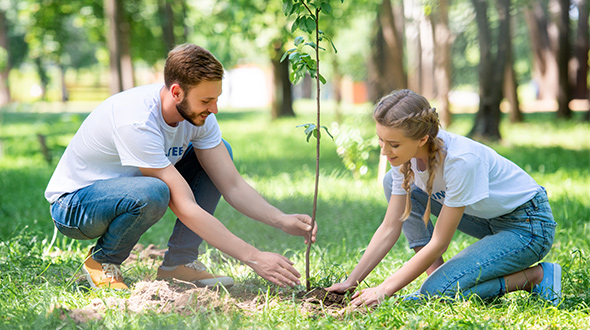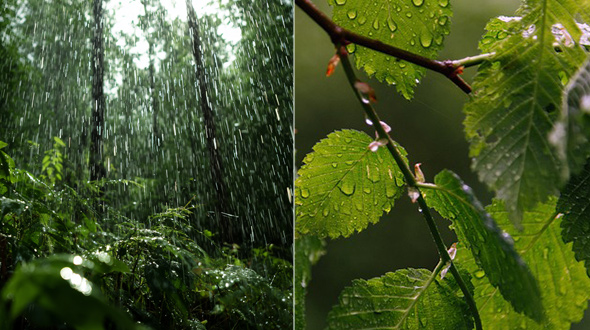
A single mature tree absorbs approximately 48 pounds of carbon dioxide annually—enough to offset a daily commute for the average American. While most people understand that trees are beneficial for the planet, science reveals environmental benefits that extend far beyond common knowledge.
Trees serve as nature’s multitasking powerhouses, simultaneously addressing climate change, air pollution, water management, biodiversity loss, urban heat, and soil degradation. Understanding how planting trees helps the environment requires examining the intricate ways these remarkable plants interact with Earth’s interconnected systems.
This comprehensive toddsmariettatreeservices.com guide examines seven key environmental benefits of tree planting, supported by research and real-world case studies. From carbon sequestration to ecosystem support, you’ll discover why reforestation efforts represent one of the most effective nature-based solutions available today.
Climate Change Mitigation Through Tree Planting
Trees fight climate change through their remarkable ability to absorb and store carbon dioxide from the atmosphere. During photosynthesis, trees capture CO2 and convert it into biomass, effectively removing this greenhouse gas from the air we breathe.
Carbon Sequestration Capacity
The numbers behind tree carbon storage are impressive. A mature tree can store up to 2,000 pounds of carbon dioxide over its lifetime, while continuing to absorb roughly 48 pounds annually. This absorption rate varies by tree species, with tropical forests demonstrating stronger cooling effects compared to temperate and boreal regions.
Collectively, forests remove approximately one-third of fossil fuel emissions annually, underscoring their crucial role in the global carbon cycle. Research indicates that scaling reforestation efforts globally could reduce atmospheric CO2 levels by 25% by 2050, providing a significant buffer against rising temperatures.
Household Carbon Offset Requirements
To put carbon sequestration in perspective, the average US household generates 20 metric tons of carbon emissions annually. Fully offsetting these emissions would require planting and maintaining about 400 mature trees, depending on species selection and regional growth conditions.
Fast-Growing vs. Long-Term Storage Species
Tree species selection significantly impacts carbon storage effectiveness. Fast-growing species like poplar, eucalyptus, and willow capture carbon rapidly but typically offer shorter-term storage unless the wood is preserved after harvest. Conversely, long-lived species such as oak and redwood sequester carbon more steadily and store it for centuries, particularly in old forests.
Air Quality Improvement and Pollution Reduction

Urban trees serve as natural air filters, removing harmful pollutants and improving air quality in cities worldwide. This filtration occurs through two primary mechanisms: absorption via leaf stomata and particle interception on leaf surfaces.
Pollutant Removal Capabilities
Trees effectively remove various air pollutants, including nitrogen dioxide, sulfur dioxide, ozone, carbon monoxide, and particulate matter. The leaves trap dust, pollen, and smoke particles, which are subsequently washed away by rainwater, preventing their recirculation in the atmosphere.
One large tree produces enough oxygen for two to four people daily, while simultaneously filtering the air they breathe. In urban environments, trees can reduce air pollution within 100 feet of planting sites—a particularly significant benefit in cities with high vehicle emissions and smog, such as Los Angeles and Beijing.
Urban Health Benefits
The health impacts of urban trees extend beyond pollution removal. Case data from New York City demonstrates that community forests save approximately eight lives annually by removing toxins and reducing respiratory stress. Additionally, roadside trees improve indoor air quality by reducing pollution levels, creating healthier neighborhoods for residents.
For the largest cities facing severe air quality challenges, strategic tree planting represents a cost-effective approach to protecting public health and well-being. The trees’ ability to remove pollutants from the air provides immediate benefits to local communities.
Water Cycle Regulation and Watershed Protection
Trees play a vital role in managing Earth’s water cycle, influencing rainfall patterns, preventing floods, and protecting water quality. Their impact on water systems demonstrates how planting trees helps the environment through comprehensive watershed management.

Rainfall Interception and Flood Prevention
Trees intercept about 25% of rainfall before it reaches the ground, reducing immediate runoff and moderating flood intensity. Tree roots stabilize soil, allowing for enhanced water infiltration and long-term storage while filtering groundwater to remove harmful chemicals and excess nutrients.
This natural water management system helps prevent erosion on slopes and riverbanks, thereby protecting communities from flooding and storm damage. The ability of trees to manage rainwater flow represents a crucial ecosystem service, particularly as extreme weather events become more frequent.
Global Freshwater Supply
Forest watersheds provide approximately 75% of the world’s freshwater supply for drinking, agriculture, and industrial use. This statistic highlights the crucial link between forests and human water security.
Biodiversity and Ecosystem Support
Trees form the backbone of biodiversity, creating complex habitats that support a vast array of wildlife species. Understanding how planting trees benefits the environment requires recognizing their fundamental role in maintaining ecosystem health and conserving species.
Species Support Capacity
A single oak tree can support over 500 different species of insects, birds, and mammals, illustrating the foundational role individual trees play in ecological networks. This biodiversity support extends beyond direct habitat provision to include food sources, nesting sites, and shelter for various animals.
Wildlife Habitat and Migration Corridors
Forests provide habitat for countless wildlife species, from large mammals like elk to smaller animals such as squirrels. Connected forest corridors facilitate wildlife migration, ensuring genetic diversity and maintaining robust populations across landscapes.
Different tree species serve as keystone hosts for specific wildlife. Monarch butterflies depend on milkweed plants, while various fruit and nut trees provide essential food sources for birds and mammals. Tree hollows and bark support nesting for numerous animals and insects, while even decaying logs become substrates for fungi and shelters for amphibians.
Pollinator Conservation
Trees play a crucial role in pollinator support and maintaining food chain stability. Their flowers, fruits, and foliage support a diverse array of pollinators, including threatened bee and butterfly species. The loss or degradation of tree habitats can destabilize entire ecosystems, making tree planting essential for pollinator conservation.
Urban Heat Island Reduction
Urban trees provide natural cooling that counteracts the urban heat island effect, where built-up areas become significantly warmer than surrounding regions. This cooling capacity demonstrates another important way that planting trees helps the environment, particularly in cities facing extreme heat.

Temperature Reduction Benefits
Tree-covered neighborhoods are substantially cooler than areas without trees. This cooling occurs through two mechanisms: canopy shade that blocks solar radiation and evapotranspiration, where trees release water vapor that naturally cools surrounding air temperatures.
Energy Cost Savings
Strategic tree placement around buildings can reduce energy costs by up to 50%, depending on canopy density and positioning. By providing natural shading and cooling, trees reduce the need for air conditioning during hot weather, resulting in lower energy consumption and reduced greenhouse gas emissions.
Health and Economic Benefits
The cooling effects of urban trees have direct health benefits, particularly during periods of high heat. Cities with greater tree canopy coverage experience fewer heat-related illnesses and deaths. During a 2003 European heatwave, urban areas with more extensive tree cover had measurably lower mortality rates.
This cooling capacity also benefits local economies by reducing energy costs, improving comfort for outdoor activities, and making neighborhoods more attractive to residents and businesses.
Best Tree Species for Maximum Environmental Impact
Selecting appropriate tree species maximizes environmental benefits while ensuring long-term success. The best choices depend on local climate, soil conditions, and specific environmental goals.
Fast-Growing Species for Quick Impact
For rapid carbon sequestration and immediate environmental benefits, consider these fast-growing options:
- Eucalyptus: Excellent for quick canopy establishment and carbon absorption
- Poplar: Fast growth with good pollution filtering capabilities
- Willow: Thrives in wet conditions and provides rapid biomass accumulation
These species offer quick initial results but may require careful water management, particularly in arid regions.

Native Species for Long-Term Benefits
Native tree species provide the most sustainable long-term environmental benefits:
- Temperate regions: Oak, maple, and hickory species support local wildlife and adapt well to regional conditions
- Tropical areas: Focus on indigenous hardwoods that support local biodiversity
- Arid climates: Desert-adapted species like mesquite or palo verde
Native trees typically require less maintenance, support a greater number of wildlife species, and integrate more effectively with existing ecosystems.
High Pollution-Absorbing Species
For urban environments with air quality concerns, these species excel at removing pollutants:
- London Plane: Exceptional tolerance for urban pollution
- Ginkgo: Highly effective at filtering airborne contaminants
- Red Maple: Strong pollution absorption with attractive seasonal color
Fruit and Nut Trees
These species provide environmental benefits while producing food:
- Support pollinators with spring blossoms
- Provide habitat for birds and small mammals
- Offer community food security benefits
- Works well in urban community gardens and residential areas
Optimal Planting Density
For reforestation projects, plant 150-250 trees per acre, adjusting based on species requirements, site conditions, and restoration goals. Young trees need adequate spacing to develop properly while maximizing collective environmental benefits.
Soil Health and Erosion Prevention
Trees fundamentally improve soil health through multiple mechanisms, demonstrating another crucial way that planting trees helps the environment. Their impact on soil systems provides benefits that extend far beyond the immediate planting site.
Root System Benefits

Tree roots anchor and stabilize soils, dramatically reducing erosion on slopes and riverbanks. This root network creates a natural defense against soil loss during heavy rains and storms, protecting valuable topsoil and preventing sediment from entering waterways.
The root systems also improve soil structure by creating channels that enhance water infiltration and air circulation, benefiting overall soil health and supporting other vegetation.
Organic Matter Enrichment
Trees continuously contribute to soil health through the decomposition of leaf litter. Fallen leaves create nutrient-rich compost that increases soil organic matter by up to 20% within a decade after planting. This organic matter improves soil fertility, water retention, and the ability to support diverse plant communities.
Mycorrhizal Networks
Tree roots form mutualistic partnerships with fungi, creating mycorrhizal networks that enhance soil nutrient cycling, water retention, and overall plant health. These underground networks represent crucial ecosystem infrastructure that supports forest resilience and biodiversity.
Land Restoration Success Stories
Real-world examples demonstrate the soil restoration potential of tree planting:
Haiti’s Reforestation Initiative: Following catastrophic deforestation that led to severe erosion and agricultural land loss in Haiti, a targeted tree-planting initiative combining native and fast-growing species has begun restoring soil fertility and agricultural productivity.
Ethiopia’s Re-greening Program: Large-scale tree planting has reversed desertification in many Ethiopian regions, restoring soil fertility, raising agricultural productivity, and rebuilding resilient rural livelihoods.
These projects show how trees can transform degraded landscapes into productive ecosystems that support both environmental health and human communities.
Challenges and Considerations for Effective Tree Planting
While the environmental benefits of tree planting are substantial, successful projects require careful planning and ongoing management. Understanding potential challenges helps ensure that reforestation efforts achieve their intended environmental goals.
Site-Appropriate Species Selection
Planting trees where they didn’t historically grow can sometimes create unintended consequences. Inappropriate species selection may alter local hydrology, potentially drying out water sources or outcompeting native plants and shrubs. This highlights the importance of choosing regionally appropriate species that complement existing ecosystems.
Water Management Considerations
In arid regions, extensive tree planting without proper water management can stress local water resources. When you plant and water trees in these environments, careful consideration of irrigation needs and drought tolerance becomes crucial for long-term success.
Long-Term Maintenance Requirements
Young trees require ongoing care, including watering, pruning, and protection from pests and diseases. Successful reforestation projects must include plans for long-term maintenance to ensure trees reach maturity and provide their full environmental benefits.
Economic Investment and Returns
Tree planting represents a significant investment, but the returns are substantial. Economic analysis suggest that every $1 invested in tree planting can return up to $5 or more in health, environmental, and economic benefits. This positive return on investment makes tree planting an economically sound environmental strategy.
The Future of Tree Planting for Environmental Protection
The scientific consensus strongly supports scaling up tree planting as a nature-based solution for environmental challenges. However, maximizing benefits requires strategic approaches that prioritize diversity, local adaptation, and integration with broader conservation efforts.
Global Policy Support
International initiatives, such as the UN Decade on Ecosystem Restoration, recognize trees as essential tools for addressing climate change, biodiversity loss, and environmental degradation. This policy supports the creation of opportunities for large-scale reforestation projects that can deliver significant environmental benefits.
Technology and Innovation
Advances in satellite monitoring, drone planting, and species selection are improving the efficiency and success rates of tree planting projects. These technologies help ensure that reforestation efforts achieve their environmental goals while minimizing costs and resource requirements.
Community Engagement

Successful tree planting initiatives increasingly involve local communities in planning, implementation, and maintenance. Community engagement ensures that projects meet local needs while building long-term stewardship that protects environmental investments.
Organizations like the Arbor Day Foundation play crucial roles in educating communities about proper tree selection, planting techniques, and maintenance practices that maximize environmental benefits.
Tree Planting Conclusion
The question “How does planting trees help the environment?” has a multifaceted, science-backed answer. Trees play a critical role in addressing climate change by absorbing CO₂, improving air quality by filtering pollutants, regulating water cycles, and supporting biodiversity—with a single oak tree capable of hosting over 500 species. Additionally, they help reduce urban temperatures and contribute to soil restoration.
These environmental benefits demonstrate why trees represent one of nature’s most versatile and effective solutions for environmental challenges. From combating climate change to creating wildlife habitats, supporting water quality, and fostering healthier communities, trees deliver measurable results across multiple environmental systems.
The evidence is clear: strategic tree planting and forest protection provide essential tools for environmental stewardship. Whether you’re considering trees for your property, supporting community reforestation efforts, or advocating for urban forest expansion, remember that each tree planted contributes to a healthier planet for current and future generations.
Consider researching native tree species suitable for your region, supporting local tree-planting initiatives, or connecting with environmental organizations focused on reforestation. Every tree makes a difference in building the sustainable, resilient environment our world needs.
(678) 505-0266
Originally published on: https://www.toddsmariettatreeservices.com/how-does-planting-trees-help-the-environment/

No comments:
Post a Comment